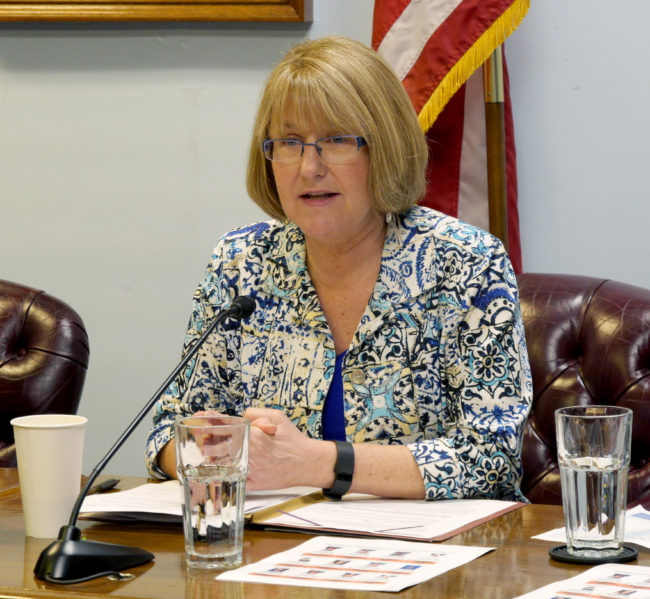
Alaska’s Department of Revenue faced criticism during a Senate Finance Committee meeting on Friday after it put out its spring forecast. It predicts an unprecedented 12 percent drop in oil production next year.
That prediction came from the state’s Department of Natural Resources, which took over the task of predicting oil production last year. The state used to use an outside consultant.
While the Department of Revenue issues a revenue forecast in the fall and spring, the Department of Natural Resources (DNR) only issues one forecast for oil production. They won’t update that forecast again for several months.
And if their initial fall prediction is wrong, it can skew the spring forecast. And that’s what DNR’s Ed King says happened this year.
“So the numbers you’re looking at this year for [fiscal year 20]18 on this particular forecast are…stale,” King said. “They have not been updated. Just to say, on the record, [it’s] very clear the department does not anticipate a 12 percent decline over the next year.”
That didn’t sit well with lawmakers who use the spring forecast — and projections of revenue that will come in to the state from oil production — to justify their proposals for state’s budget. Among other proposals, lawmakers are considering an income tax this session, to help fill the state’s budget gap.
Eagle River Republican Senator Anna MacKinnon says her finance committee needs better modeling.
“Production will play a huge role,” MacKinnon said. “It makes a huge economic difference in the picture that is being painted for Alaskans as we go forward with at least one legislative body in pursuit of taxing individual Alaskans.”
King told members of the Senate finance committee that Department of Natural Resources staff are trying to do more with less.
“I guess the parting comment I would make is that, with reduced budgets and the reduced resources and the task of producing this forecast without any additional resources is a fairly heavy lift for us to absorb and we can’t necessarily do that every single month while new data comes in,” King said. “We are doing the best we can.”
Prices per barrel of oil are projected to increase slightly to $54 per barrel in the 2018 fiscal year.
And another bright spot in the revenue forecast is that the state expects to have about $200 million more in general fund revenue this fiscal year than it originally projected. And another $208 million more next year.
